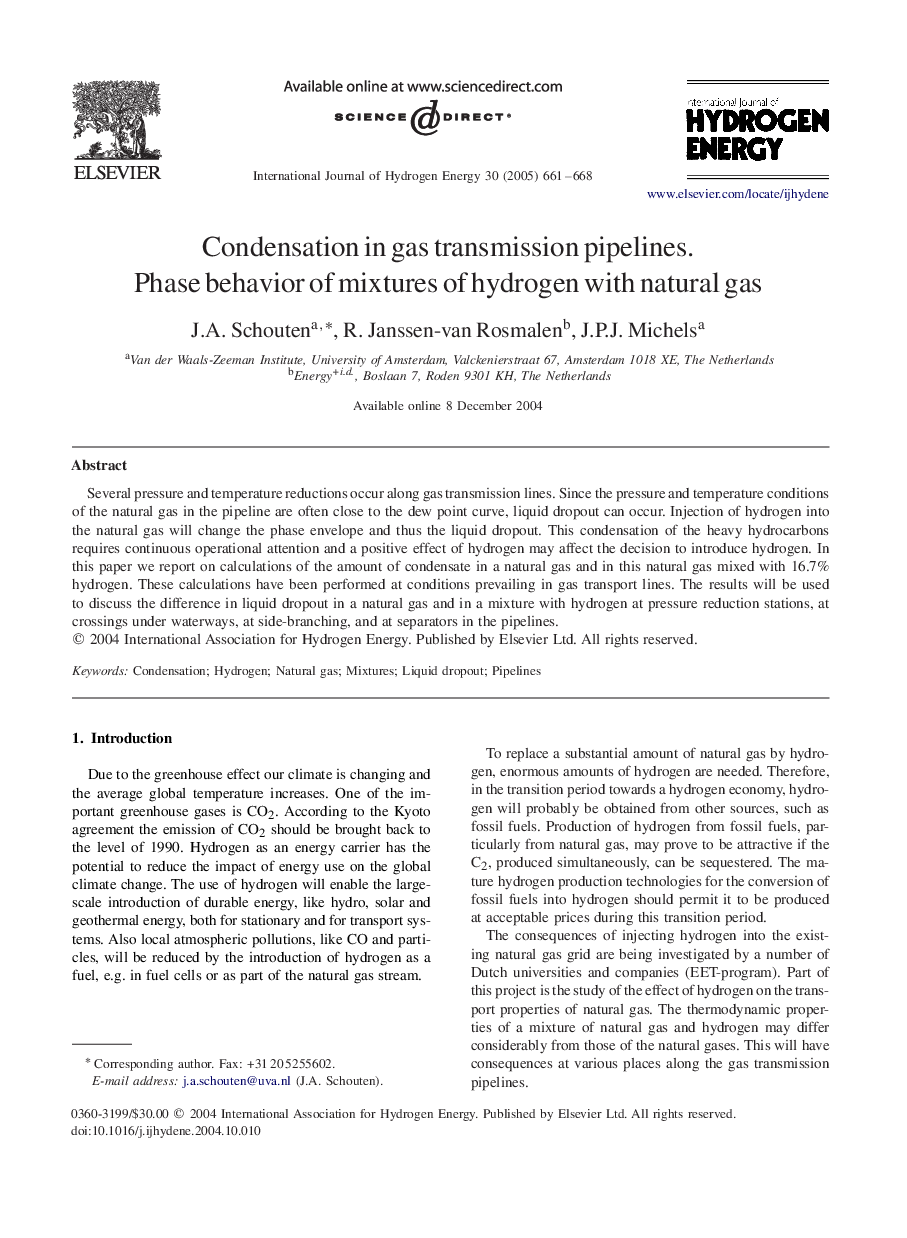| Article ID | Journal | Published Year | Pages | File Type |
|---|---|---|---|---|
| 9759311 | International Journal of Hydrogen Energy | 2005 | 8 Pages |
Abstract
Several pressure and temperature reductions occur along gas transmission lines. Since the pressure and temperature conditions of the natural gas in the pipeline are often close to the dew point curve, liquid dropout can occur. Injection of hydrogen into the natural gas will change the phase envelope and thus the liquid dropout. This condensation of the heavy hydrocarbons requires continuous operational attention and a positive effect of hydrogen may affect the decision to introduce hydrogen. In this paper we report on calculations of the amount of condensate in a natural gas and in this natural gas mixed with 16.7% hydrogen. These calculations have been performed at conditions prevailing in gas transport lines. The results will be used to discuss the difference in liquid dropout in a natural gas and in a mixture with hydrogen at pressure reduction stations, at crossings under waterways, at side-branching, and at separators in the pipelines.
Related Topics
Physical Sciences and Engineering
Chemistry
Electrochemistry
Authors
J.A. Schouten, R. Janssen-van Rosmalen, J.P.J. Michels,
